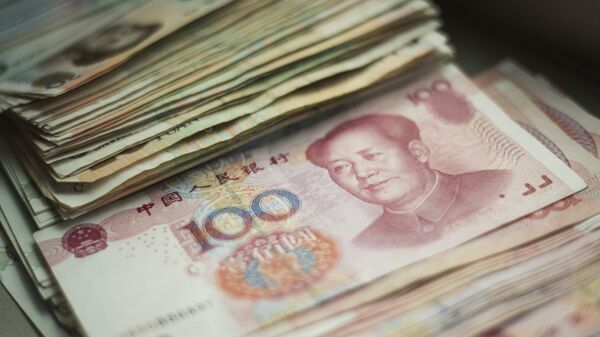Kristian Rouz — Earnings in Mainland China's industrial sector accelerated last month due to the higher producer margins and an increased factory output, coupled with a low-base effect. This comes as global prices for iron ore and bauxites remain subdued, whilst changes in global trade have pushed industrial metals and automobile prices higher.
READ MORE: 'Trade Wars Between US and China Can No Longer Continue' — Trade Specialist
According to a report from China's National Bureau of Statistics (NBS), the mainland's industrial enterprises posted a 21.9-percent annual increase in April. This is a significant acceleration from the previous month when profits rose a meager 3.1 percent.
"Overall, operating conditions across China's manufacturing sector continued to improve in April. But uncertainty in exports has increased significantly, and the dependence of the Chinese economy on domestic demand is rising," Zhengsheng Zhong, of CEBM Group said.
China's industrial sector revenues totaled at some $90.14 bln last month. However, this comes with a grain of salt, as industrial company liabilities also rose by 6.1 percent year-on-year. This is an indication that China's model of economic growth based on elevated borrowing is still intact, despite Beijing's gradual progress on the path of supply-side reforms.
Additionally, the NBS said, China's industrial profits rose 15 percent year-on-year between January and April, compared to a 24.4-percent growth for the same period last year. This means the Chinese economy is still facing risks of a broader slowdown despite a mild pickup in GDP expansion earlier this year.
"Manufacturers are facing a sharply deteriorating foreign demand environment as new export orders declined for the first time in 17 months in April," Zhong said.
China's chemical, steel and automotive industries have benefitted the most from Beijing's reforms aimed at supporting domestic demand for manufactured goods.
Overall, the mainland's industrial output rose 7 percent in April, surpassing earlier forecasts. The NBS also said Beijing's economic reforms helped offset the risks associated with high corporate debt and elevated production costs.
However, the reforms — aimed at supporting the domestic consumer — have also contributed to the ongoing rise in labor costs in China, affecting the international competitiveness of Chinese goods.
Additionally, Chinese exports have been under pressure amidst the ongoing trade standoff with the US, stirring concerns that the People's Bank of China (PBOC) could devalue the renminbi in order to bolster its exports to other parts of the world.
"Slower growth is likely in the months ahead as the drags on economic activity from weaker credit growth and the cooling property market intensify," Chang Liu of Capital Economics said.
According to a separate report from Caixin China, the nation's Purchasing Managers' Index (PMI) in the manufacturing sector ticked up to 51.1 last month from 51.0 in March. Readings above 50 indicate expansion and weak PMI gains might suggest the Chinese industrial production is still balancing on the verge of contraction.
READ MORE: To be Continued? China Wins First Round of Tariff War, Trump Not Satisfied
In this light, Beijing is expected to ramp up its effort modernizing the "old economy" — the vast export-reliant manufacturing-based sector — into a more flexible, domestic-focused "new economy."
At the same time, Chinese authorities are also expected to maintain the slow pace of the ongoing reforms in order to not "rock the boat" — as China's staggering levels of corporate debt, and an overheated real estate sector could provoke painful shockwaves in the economy in case of elevated instability.
Such considerations render a renminbi devaluation quite a feasible option for Beijing — despite the modestly optimistic situation in the industrial sector at this point.



